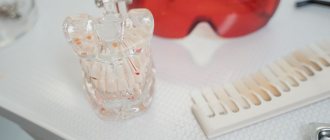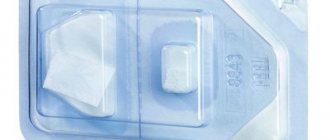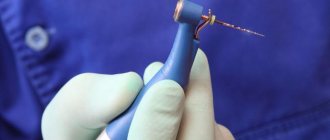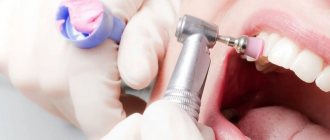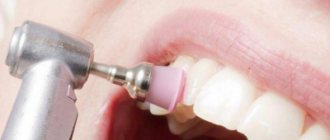Gastropods or simply snails are very interesting animals. They differ in their specific anatomy and physiology. These are same-sex creatures, undemanding to living conditions. Due to their ease of care and economical maintenance, snails are often bred as pets. Therefore, many breeders are interested in facts about the structure of the body of mollusks. How they reproduce, how they build up their “house”: how many teeth a snail has, where they are located and whether they can bite.
What is a mollusk shell?
The shell is an integral part of any snail. Thanks to the external skeleton, the latter can protect itself from attacks by natural enemies and from the influence of other natural factors from the outside. The sink also helps retain moisture.
The external skeleton resembles a cone. By the way, it is precisely because of this shape that the organs of the cochlea are located asymmetrically. The upper layer of the skeleton is usually smooth or has small growths.
Where hasn't a snail gone before?
From zoology lessons we know that the delicate body of a mollusk is hidden in a protective shell. All the vital organs are hidden in the shell, and only the funny snail’s head and flat belly peek out from the house.
Achatina crawls slowly, smoothly and very impressively. Young mollusk fishermen often ask how many legs does a snail have? This question can be safely answered – one.
The abdomen, with the help of which the exotic beauty moves along the ground, is called the snail’s leg. Alternate muscle contraction leads to wave-like movement of the sole. The mucus secreted by the individual facilitates gliding and reduces friction of the snail's leg on various rough surfaces. If you conduct an experiment and run a clam along the blade of a knife, it will not get hurt, but will gently envelop it.
How many legs does a snail have? To answer this question, you can send your pet on a journey through transparent glass. On the reverse side, you will see how the muscles of the flat stalk contract, and the mollusk strives to explore a new unknown space.
The snail's foot has completely unique properties. She can overcome any surface without harming herself. Extreme experimenters tested what would happen if a snail was hit by a blade.
Do snails have teeth?
Surely, some of us have been interested in this question at least once. It is known that mollusks are both herbivores and predators. In this case, snails must have teeth, otherwise how else can they chew food?
That's right, they have them. A photo of the snail's teeth can be seen below.
They are located directly on the tongue, which the mollusk uses to cut and grind pieces of food. Scientists can also easily examine a snail's teeth under a microscope.
It is worth noting that the teeth of mollusks are not exactly what we imagine in the traditional sense of the word. All representatives of gastropods have a special organ in their mouth - the radula. This is the analogue of the tongue and teeth that we talked about earlier. It is noteworthy that in poisonous snails the radula cavity also plays the role of storing poison, which is secreted from a special gland.
What about quantity? The count goes into the thousands, and usually everything depends on the size of the mollusk itself. So, for example, to the question of how many teeth the Achatina snail has, the correct answer is 25,000. This is despite the fact that Achatina snails are real giants among their relatives. In small mollusks, the minimum number is usually about 10,000 teeth.
What does a snail's mouth look like under a microscope?
It's hard to believe that such a small mollusk has so many teeth. Namely, up to 25 thousand pieces. It’s even more difficult to imagine where they fit and what dimensions they have.
The teeth can be thin, even, curved
It is impossible to see the teeth with the naked eye. This requires a microscope. Just look at a photo of your teeth. As a rule, it is difficult to call what you see teeth. Outwardly, it resembles a rough tongue. From a scientific point of view, these are teeth.
Mollusks are unique animals
During the research, interesting facts were revealed:
- the shape is significantly different. The teeth can be thin, even, curved;
- the arrangement is flat, in rows. The number of cloves per row depends on the species in question;
- Over time, the teeth wear out. However, others appear in their place. This happens all the time.
This subspecies of animals does not bite off food, but scrapes it off. For this reason, the cloves are compared to a grater.
Snail in the wild - where does it live?
Almost any climate and all continents are suitable for living in mollusks. The only exceptions are Antarctica and hot deserts. Some mollusks can be found in the Pacific Ocean, throughout the Mediterranean and even in the Arctic Ocean.
The most comfortable places for these creatures are: Europe, Africa, America and Australia. Very often they can also be found in the territories of Asia and Russia.
To keep the bodies of mollusks from drying out, they need to consume a lot of moisture. That is why they live very comfortably in places with high humidity.
The strongest animal material on the planet
The reader's attention should be drawn to the fact that snails are among the living creatures that have the strongest teeth on the planet. A striking representative of mollusks with the strongest teeth in the world is the limpet sea snail. The habitat of these individuals is sea cliffs with a huge amount of algae on them. Gathering in groups, the mollusks completely clean the rough surface of the rock from algae.
The scientists who were interested in this understood that in order to clean the rough rock, the snails must have fairly strong teeth. After conducting some research, scientists discovered an amazing fact - the teeth of the sea limpet are made of a material that is one of the most durable on the planet.
During the experiments, it was possible to find out that the teeth of these representatives of mollusks consist of the substance goethite, which contains iron, and densely packed mineral fibers add strength to the teeth.
As a result of the experiment, scientists crushed the teeth of mollusks into microscopic particles. Next, these particles were attached to a special microscope, which determines the strength of a particular material. The results of the experiment were stunning; the microscope gave a strength result of 5 GPA, which is five times more than the strongest material known at that time - spider silk.
Of course, the teeth of the limpet snail were inferior in strength to carbon fiber artificially created in the laboratory, but only slightly. Thus, by studying these unusual creatures further, there is a huge opportunity for science to use mollusk teeth to create the strongest things on the planet.
5 / 5 ( 2 voices)
Tips for those who want to start breeding snails at home
In the previous chapter, we talked about what you can feed any snail. In order for her to grind all this, there must be enough calcium in her teeth. If there is a deficiency, the mollusk will begin to sharpen its own shell.
All this will end with the complete destruction of the protection and, as a result, the death of the snail. Calcium deficiency can be prevented with the help of special tablets or crushed eggshells, which will be used as food.
If the snails are kept in an aquarium, they can be fed fish food, special plants, algae tablets and finely chopped vegetables. It is strictly forbidden to give shellfish human food. It is also worth paying attention to the fact that there are never any newspapers nearby. If a snail eats paper, then after such a feast it can no longer be saved.
To prevent the aquarium from losing all its vegetation, you will have to control the number of your pets. A small amount will do an excellent job of destroying all the rot that accumulates over time.
Can a snail bite?
Whether a snail bites or not is a question that worries many. It is especially relevant in relation to Achatina. The size of this snail is impressive; for many it has become a favorite pet. Achatina is often used for medicinal and cosmetic purposes. Seeing a huge snail, many are afraid of its bite.
Snails cannot bite a person; they have a completely different structure of the chewing apparatus.
However, many have noted a slight tingling sensation when Achatina crawls over a person’s body. Why is this happening? The answer is simple - snails are often picked up after they have been given food. While moving, she smells food and tries to “scrape” it in this place. It feels like running sandpaper over your skin.
This property of mollusks is used in cosmetology. For example, cucumber juice is applied to the places where the procedure is performed, which attracts Achatina and stimulates its “work”.
About life expectancy
Despite the fact that snails have very good stress resistance, they live a maximum of only 25 years. Being in nature, mollusks run the risk of being killed, which means that their life expectancy in such conditions is noticeably reduced.
For example, a grape snail can live safely for up to twenty years. As for living in the wild, its life expectancy is usually only eight years.
By breeding snails in captivity, you can expect them to live a really long life. Naturally, you should not neglect the simple rules of care and feeding.
Nutritional Features
The type of food depends on the type of mollusk. Land mollusks most often kept as pets are grape snails and Achatina. The basis of their diet is natural plant foods: vegetables and fruits, herbs, some legumes and cereals. You can add dandelion, plantain, nettle, and grape leaves to the menu.
Before feeding, food should be rinsed well with clean water. You can offer minced meat, softened bread, eggs, and mixed feed. Food is served in crushed or grated form.
Salt and sugar, artificial colors, spices, and flavors should not be added to shellfish food. These substances are poison for them.
In addition, the diet must contain foods high in calcium. When there is a shortage of this microelement in the body of snails, then they begin to eat the shells of their relatives. This leads to the death of the animal. Calcium-containing products that can be included in your pet's menu: buckwheat, meat and bone meal, crushed eggshells, millet, dry gammarus and daphnia. Natural chalk is also suitable.
Animals should be fed once a day, preferably in the evening. It is best for young animals to have 24-hour access to food.
It is advisable to serve food at room temperature. There must be a container with drinking water available in the public domain. The menu should be balanced. Eliminate pickled, spicy and smoked foods, raw potatoes, pasta, and citrus fruits from your diet.
If you accustom your pets to one type of food, they may subsequently refuse other food.
Snails should not be given large portions of soft food: they can bury themselves in it and die from suffocation.
In their natural habitat, gastropods can feed on carrion, fish, insects (flies, midges, mosquitoes) and worms, plant remains, grass, leaves and tree bark, and berries.
What does the Achatina snail eat?
Photo: Large snail Achatina
Akhetines are herbivorous mollusks that feed on green vegetation, vegetables and fruits.
The diet of Achatina snails includes:
- sugar cane;
- tree buds;
- decaying plant parts;
- spoiled fruits;
- fruit tree leaves;
- grape leaves, lettuce;
- clover;
- dandelions;
- plantain;
- alfalfa;
- nettle;
- fruits (such as avocados, grapes, pineapple, mango, cherries, apricots, pears, apples);
- vegetables (carrots, cabbage, zucchini, beets, pumpkin, lettuce);
- bark of trees and shrubs.
Dimensions
Achatina are considered the largest land snails.
Many people are interested in how big they can grow. Their eggs reach 5 mm in diameter. The hatched babies grow very quickly and are on average about 15 cm in length. In nature or in good conditions, very large specimens are found - up to 25 cm, while their shell can reach 30 cm. Table of snail growth by month:
| Month | Size |
| 1 month | 1 - 3 cm |
| 2 months | 2 - 7 cm |
| 3 months | 3 - 10 cm |
| 4 months | 4 - 10 cm |
| 5-12 months | 5 – 14 cm |
| 1 year | reach maximum growth and stop growing |
The structure of the vital systems of the snail
Let us next consider the internal structure of the cochlea in more detail.
- Respiratory system. The snail's lungs are a relatively large area of the mantle region, enveloped in a dense network of thin blood vessels. Air enters through the breathing hole and gas exchange occurs through thin vascular walls.
- Digestive system. Represented by a rather extensive oral area. But the jaws, the radula (“grater” with numerous teeth) are hidden in the pharynx. The products of the salivary glands are also excreted here. The short esophagus of the snail passes into the voluminous cavity of the crop, which, in turn, flows into a relatively small stomach. The latter “embraces” the liver along its entire circumference, which occupies the upper spirals of the animal’s shell. From here comes a loop-shaped intestine, which passes into the hind intestine. Its natural opening is on the right, next to the breathing hole. It should be noted that the snail liver is not only a digestive gland, but also an organ where processed food is absorbed.
- Sense organ system. The structure of snails includes organs of balance, touch, smell and vision. The eyes are located on the upper parts of the “horns”. In snails, this is the so-called optic vesicle - an invagination of the body integument. The eye is filled with a crystalline lens - a spherical lens, and the optic nerve approaches its bottom. It must be said that only the front wall of the optic vesicle is transparent, the back and sides are pigmented.
- Nervous system. The “brain” of the cochlea is made up of ganglia: cephalic, foot, pleural (cavitary) - paired; trunk, pallial, pariental - single. There are also a number of peripheral (local) nerves located throughout the body. The cerebral (head), pedal (foot sole) and pleural (body) ganglia are connected by the most noticeable connectives.
Let's look at the differences and similarities in the structure of different species - using the example of the grape snail and the Achatina snail.
How do domesticated Achatina bite?
Anyone who has decided to have an Achatina for the first time may be keenly interested in the question - is such a seemingly defenseless pet capable of painfully biting a person’s finger? There is no reason to worry, Achatina are absolutely peace-loving animals. If you bring your finger close to the clam’s mouth, the skin will feel suction and pleasant scrubbing. Achatina's teeth do not cause any harm to a person.
In China, Japan and Europe, Achatina is widely used for cosmetic and therapeutic procedures. The rejuvenating effect of Achatina after contact with teeth was first thought of in Chile. 90% of workers at one of the largest local snail farms noted that skin abrasions heal faster if they were “licked” by snails. And some noted that after the procedures, small scars disappear. After this discovery, the mucus secreted by Achatina began to be used in many burn centers around the world.
